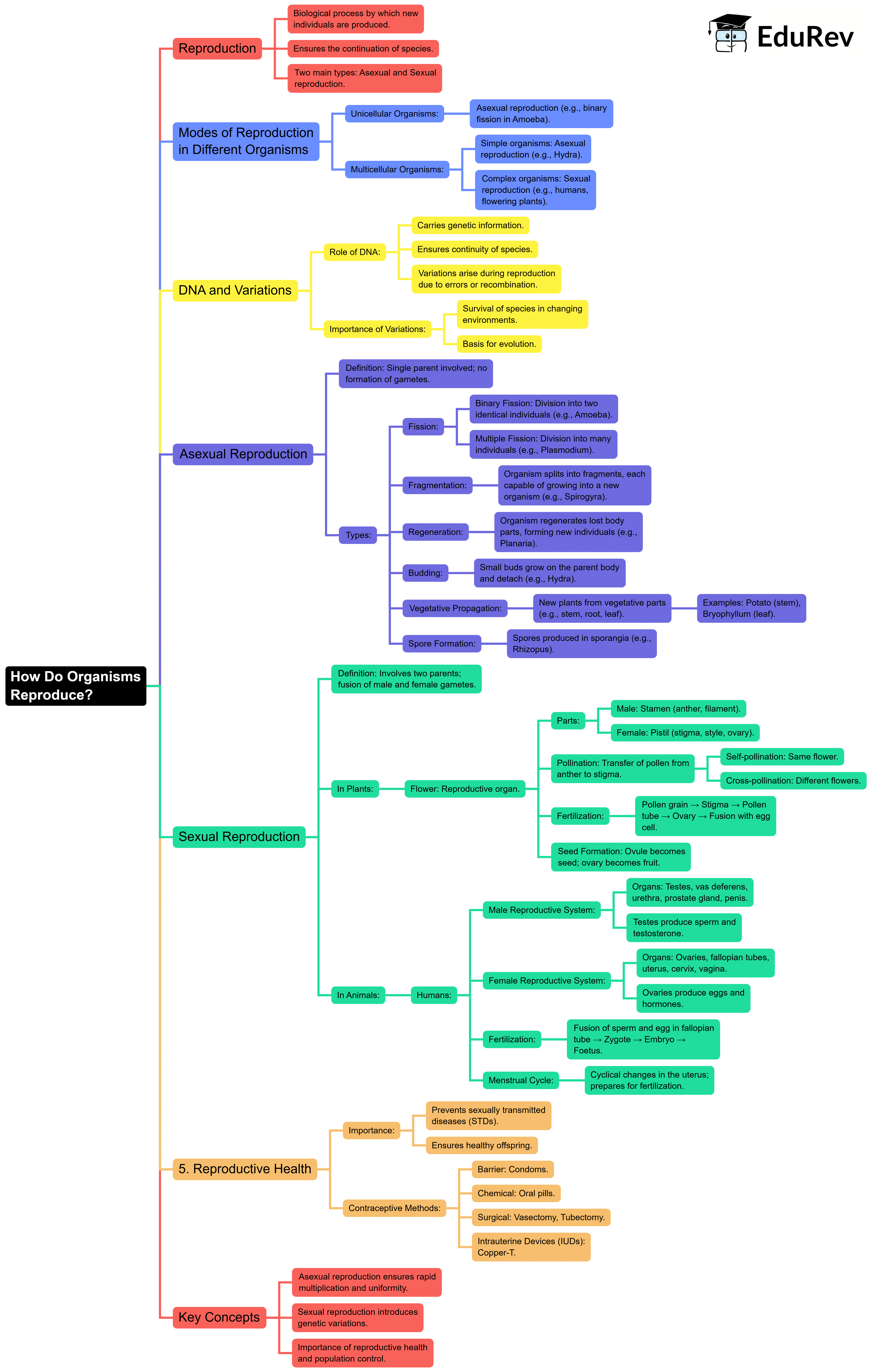Class 10 Exam > Class 10 Notes > Science Class 10 > Mind Map: How do Organisms Reproduce?
Mind Map: How do Organisms Reproduce? | Science Class 10 PDF Download

The document Mind Map: How do Organisms Reproduce? | Science Class 10 is a part of the Class 10 Course Science Class 10.
All you need of Class 10 at this link: Class 10
|
80 videos|569 docs|80 tests
|
FAQs on Mind Map: How do Organisms Reproduce? - Science Class 10
| 1. What are the main types of reproduction in organisms? |  |
Ans. The main types of reproduction in organisms are asexual reproduction and sexual reproduction. Asexual reproduction involves a single organism producing offspring without the involvement of gametes, resulting in genetically identical offspring. Examples include binary fission in bacteria and budding in yeast. Sexual reproduction, on the other hand, involves the combination of genetic material from two parents through the fusion of gametes, leading to genetically diverse offspring. This process can be observed in animals, plants, and many other organisms.
| 2. How does asexual reproduction occur in different organisms? |  |
Ans. Asexual reproduction can occur through several methods, including binary fission, budding, fragmentation, and vegetative propagation. In binary fission, a single-celled organism, like bacteria, divides into two equal parts. Budding involves a new organism developing from a bud on the parent organism, as seen in hydra. Fragmentation occurs when an organism breaks into pieces, each capable of growing into a new individual, like in starfish. Vegetative propagation is common in plants, where new plants grow from parts such as roots, stems, or leaves.
| 3. What is the role of gametes in sexual reproduction? |  |
Ans. In sexual reproduction, gametes are specialized reproductive cells that fuse during fertilization to form a zygote. In animals, male gametes are called sperm, and female gametes are called eggs. Each gamete carries half the genetic information of an organism, which is crucial for maintaining genetic diversity in the offspring. The fusion of sperm and egg during fertilization restores the diploid state, resulting in a new organism with a unique combination of genetic traits from both parents.
| 4. What are the advantages and disadvantages of asexual reproduction? |  |
Ans. Asexual reproduction has several advantages, including the ability to reproduce quickly and efficiently, as it does not require a mate. This is beneficial in stable environments where the parent organism is well adapted. However, the main disadvantage is the lack of genetic diversity, which can lead to vulnerability to diseases and changes in the environment. Populations that reproduce asexually may struggle to adapt over time, as they are all genetically similar.
| 5. How do environmental factors influence reproduction in organisms? |  |
Ans. Environmental factors such as temperature, light, and availability of resources can significantly influence reproduction in organisms. For instance, many plants rely on specific light conditions to trigger flowering, while temperature can affect the timing of breeding in animals. Additionally, resource availability can impact the reproductive success of organisms; for example, food scarcity may lead to lower birth rates or even reproductive failure. Changing environmental conditions can thus have profound effects on reproductive strategies and success across various species.
Related Searches

















